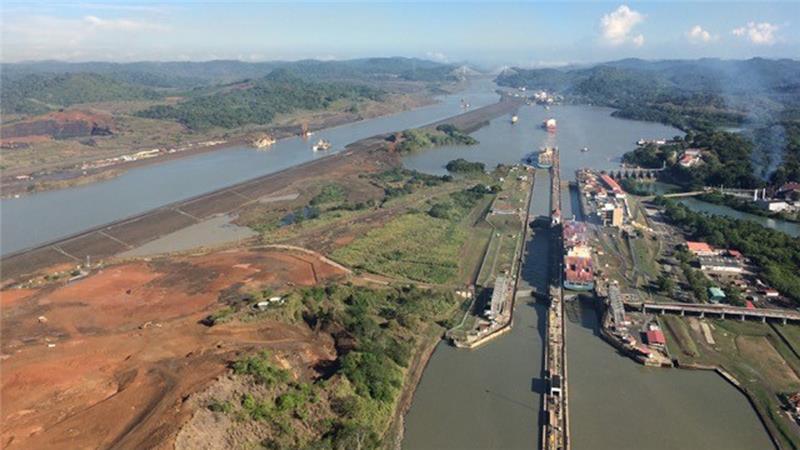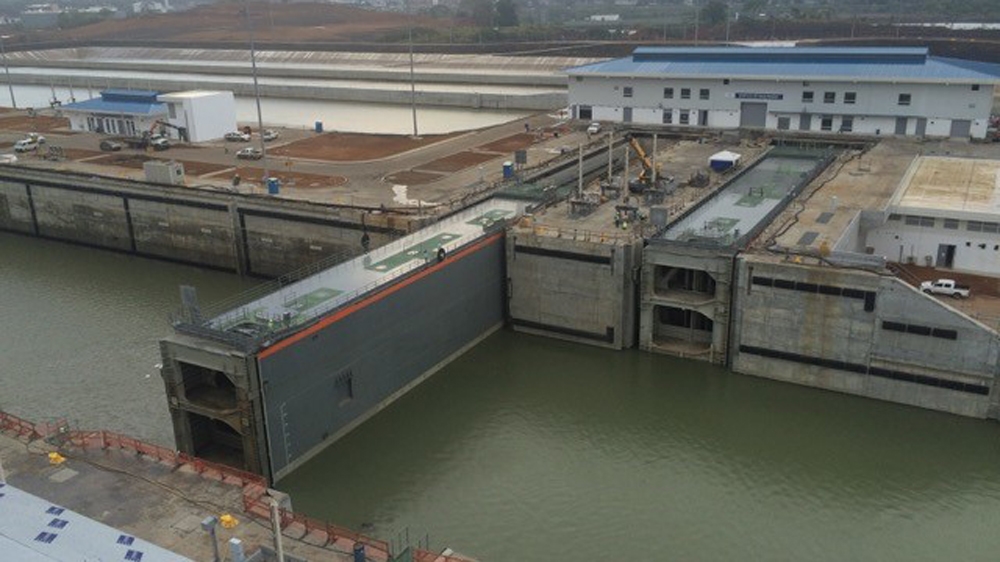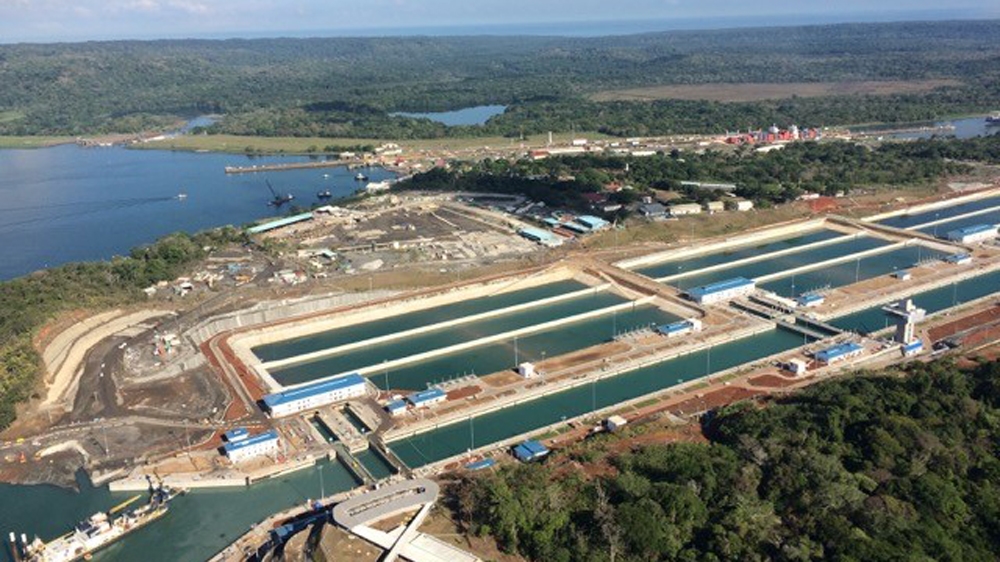Natasha Ghoneim at AlJazeera reports on her research of the recent canal expansion. Great article and great pictures.
When I first started researching the Panama Canal expansion, I never thought I would mention the preservation of the surrounding rainforest and discovery of 21-million-year-old fossils in the same sentence.
But I have since learned that they are all connected.
After almost two years of delays and $2bn in additional expenditure, the expanded 102-year-old waterway is scheduled to open on June 26 this year.
It took 30,000 workers seven years to build the expansion. The consortium of companies that built it boasts that it is “one of the most challenging engineering infrastructure projects worldwide”.
A new third lane and existing channels that are deeper and wider will give bigger ships a short cut between the Pacific and Atlantic Oceans.
It’s expected to have quite an impact on international maritime trade.
“The size of this canal is second to none and it is unique from the size, to the gates and all the controls,” CEO of the consortium GUPC Giuseppe Quarta said.
“This is an expansion of a canal that already works very well. It builds up from a history of 100 years of working efficiently.”
But there has also been a breakdown in the working relationship between the consortium of construction companies and the government.
They are engaged in a costly battle and are now in the midst of an international arbitration process that could take years to resolve.
The consortium says it has spent $2bn in unforeseen expenses and is seeking reimbursement from the government.
The Panama Canal Authority says the additional costs are due to failings of the consortium and taxpayers should not bear the brunt of its missteps.
Positive surprises
The expansion project has come with some positive surprises as well.
The Panama Canal needs high water levels in order to operate. It is surrounded by a gorgeous rainforest. With its abundant rainfall, it will help keep the water levels of the canal high.
That symbiosis has led the government to protect the rainforest in the area.
A community activist told Al Jazeera that if it was not for this lucky reliance on the rainforest, the area would eventually give way to high rises and resorts.
Fifty million cubic metres have been excavated during the expansion project.
Paleontologists from the Smithsonian Tropical Research Institute have taken full advantage of this.
They have been allowed to dig at the site and say it is a new frontier of discovery. One of their most celebrated findings is a 21-million-year-old monkey fossil.
That’s when the isthmus of Panama rose from the sea.
Way to Central America
The monkey’s closest relative lives in Africa and that left scientists wondering how it managed to make its way to Central America.
“We are really opening a window to a world we didn’t know existed,” said Carlos Jaramillo from the Smithsonian Tropical Research Institute.
Through their research, the paleontologists say they are creating a geological timeline about the environment and the migratory patterns of animals in the region.
“For decades, scientists assumed that in the tropics you wouldn’t find fossils because the rainfall is very high and no fossils could be preserved,” Jaramillo said.
“It’s a time of exploration, like paleontologists did in North America 120 years ago.”


